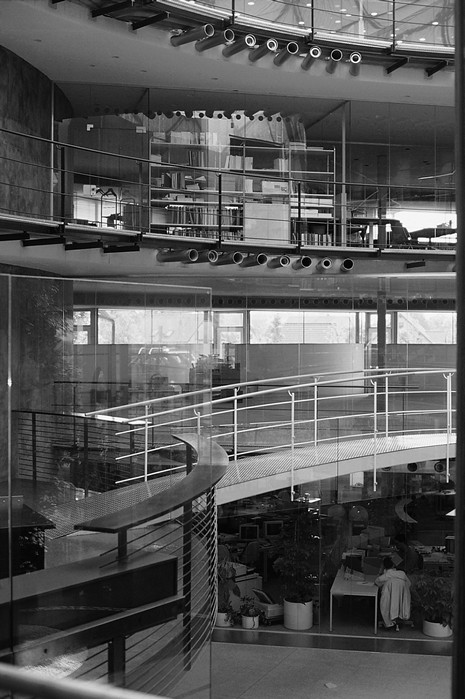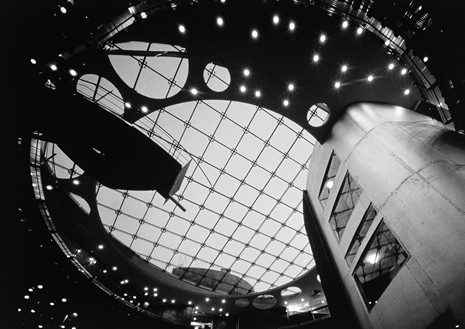Description
The architects Kauffmann, Theilig und Partner erected a round, four-storey building on the edge of the industrial park belonging to the Swabian town of Gniebel as the new headquarters of Datapec. The capital of the software company, organised in teams, is good communication between the staff members. The directionless circular form stands symbolically for a non-hierarchic corporate structure based on teamwork. The arrangement of the group offices in a ring and the transparent office walls reinforces the employees’ sense of togetherness and shared identity.
At the centre of the transparent office environment is a light-flooded four-storey-high atrium. Here the access areas, the open stairs and circular walkways that interlink the various floors and offices, become communication areas. The high “residential quality” of the space makes it inviting to linger and in this way contributes significantly to informal internal communication.
A further design determining theme of the new building was the execution of the workplaces so that they were suitable for computer work. In order to avoid glare and too much light contrast in the offices, the computer workstations are lighted entirely by indirect sunlight or north light. The offices situated closer to the building’s core are sufficiently indirectly lit, via the glass roof of the atrium. For the offices at the outer perimeter, the architects solved the problem with the interplay between glazed façade segments and closed concrete
slices arranged like a cogwheel. Simple wooden balconies jutting far out ring the entire building and bring the desired shade. In addition to offering the opportunity for casual encounters, these external access areas offer a view of the Swabian Alb.
Just as the computer motivated the unconventional design of the façade, it also influences the environmental design concept. As a rule, the workplaces are each equipped with several computers, which leads to high heat loads, positively influencing room temperature in winter. The balance of the heat necessary is conveyed to the offices by underfloor supply channels. In order to conserve resources, the supplied air is preheated by thermal tunnels and the heat recovered from waste air. In summer the atrium forms the ‘cold’ core of the building. The supplied air, pre-cooled by the thermal tunnels, is conveyed into the central atrium and from there, to the adjacent offices through natural air exchange brought about by the temperature differential between the atrium and the offices. The system is supported by fans that propel cool air into the air supply channels. As thermal masses, the exposed concrete ceilings contribute significantly to a comfortable room temperature both in summer and winter. This high-tech company thus finds its counterpart in low-tech architecture.
Drawings
Ground floor
Typical office floor
Longitudinal section
Photos

The cafeteria and the circular galleries create informal meeting areas

The roof of the central atrium consists of a grid of steel cables which are at the same time the supporting structure for the glass panels
Originally published in: Rainer Hascher, Simone Jeska, Birgit Klauck, Office Buildings: A Design Manual, Birkhäuser, 2002.